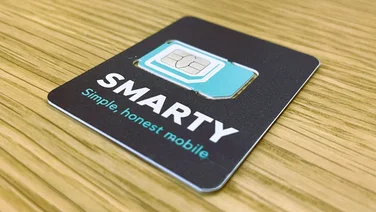To help us provide you with free impartial advice, we may earn a commission if you buy through links on our site. Learn more

These days, most people rely on their smartphone as the primary method of communication, and so you may well be wondering whether you can do away with your landline altogether – or, if it’s necessary, if all you need at home is an internet connection.
Before we get too deep into whether or not you need a landline, and the specifics of broadband, we really should clear up what we mean when referencing these two common terms.
What is a landline?
A “landline” is a metal (usually copper) telephone connection that runs from the owner’s home to the greater telephone network. This type of physical connection has been around since before the telephone was actually a thing, fundamentally forming the basis on which telegram systems operated.
The most important thing to note is that not every physical wired communications connection to your home is a landline – which will go into further detail later on.
What is broadband?
Now, defining “broadband” is more difficult, because it represents a moving target. Broadband generally just means fast, reliable, always-on internet. While “reliable” and “always-on” are self-explanatory, what constitutes a “fast” internet connection? A few years ago, a 10Mbps (10 megabits per second) connection would have been considered broadband. These days, that will barely be sufficient for basic web browsing, given the size of web pages.The speed of the internet connection will also be determined by the number of people having to share the same connection. A single person using a 25Mbps connection for general browsing and watching HD video streams could be just fine, but for a family of four it simply wouldn’t be enough. While we won’t pretend that this is the final word on the matter, at the time of writing, and in our opinion, we believe that true broadband starts at around 100Mbps, and 1Gbps (Gigabit per second) is the gold standard for a truly fast home internet connection. We would consider anything between those two points true broadband; but, ultimately, what you consider as fast will depend on what you use that connection for!
Faster home connections, as much as 10Gbps, are becoming available in some parts of the world, but it will be many years before that sort of speed becomes necessary – or widely available.
READ NEXT: Best mobile broadband
Why do people think landlines and broadband go together?
There are a few reasons that people think that broadband internet and landlines go together.

First, prior to broadband, dial-up internet made use of existing copper telephone lines to transmit and receive signals. This is where the term “modem” comes from, short for “modulator demodulator”. It’s a device that converts analog signals travelling over a copper telephone line designed for voice communication into digital information.
Second, the first type of broadband internet that most people encountered was DSL (digital subscriber line) internet, specifically in the form of ADSL. The “A” is for “asymmetric”, which simply denotes that the download and upload speeds aren’t the same. Like dial-up, DSL operates over existing copper telephone lines, but by cleverly sending digital signals in a frequency range that doesn’t interfere with voice calls, you no longer have to pick between using the phone and being on the internet.
The third reason likely to have you believing that landlines and broadband go together is because, for a time at least, broadband providers bundled telephony and broadband together. This makes business sense if you’re trying to monetise an existing copper line network, but it isn’t a there’s no technical reason why this is necessary.
READ NEXT: What is Sky Broadband Ultrafast?
So, do you need a landline for broadband?
The short answer is “no” – a landline isn’t necessary for broadband. However, DSL and fibre-to-the-cabinet (FTTC) connections still require a copper line running from your home. However, since both connection types run significantly slower than 100Mbps, we wouldn’t consider them broadband by modern standards for that reason.
For true broadband, fibre-to-the-home and cable broadband still require a physical connection on your premises. For fibre, this would take the form of an optic fibre cable in a protective sheath that terminates in an ONT (optical network terminal), which then connects to a fibre modem, or modem/router combo unit.

Cable internet is provided by your cable TV provider using the existing cable connection that also serves television programs. This connects to a cable model, also provided by your cable TV company. In the UK, this is most likely to be Virgin Media, which has extensive cable infrastructure.
Wireless broadband
You don’t need any physical line to your home for broadband. Your smartphone, if it has a 4G or 5G connection, is already a completely wireless broadband connection. However, mobile broadband has a higher cost to its bandwidth than fixed wireless internet.
Fixed wireless internet might also use the 5G network, or it could be some form of long-range Wi-Fi transmission (usually in rural areas), or even satellite broadband.
Satellite internet has generally been quite expensive, and only justifiable for remote locations where physical lines are impractical or too expensive to install. However, with the rise of extremely low orbit satellites such as Starlink, for example, broadband similar to lower-end fibre packages is becoming affordable and more widely available.
If you’ve been concerned about a lack of internet because you live somewhere that isn’t served by physical wired connections such as landlines or fibre, from the above you can see that there are now more options available to access the tech than ever before.






